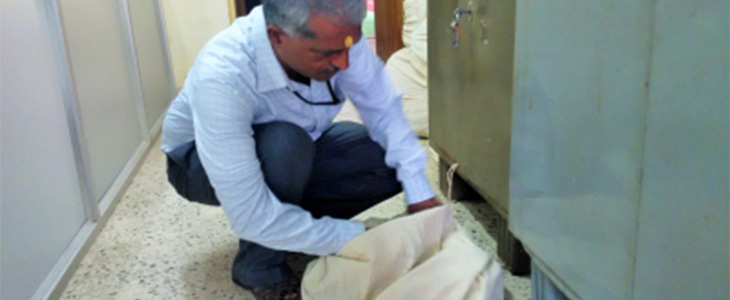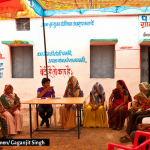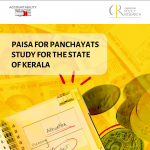
Following the Money: The PAISA for Panchayats Saga
18 April 2016
The Paisa for Panchayats project aimed to track how funds flow into the Panchayats from the State government. We chose the district of Kolar in Karnataka and aimed to find how funds are spent by the government in the jurisdictions of 30 Village Panchayats, in the taluk of Mulbagal.
The steps in doing this commenced with analysing the State budget documents, and in particular, the separate allocations made for the Panchayats, in the ‘District Sector’ budget, which is a sub-unit of the State budget. After analysing the State budget, we aimed to seek information from the State treasury and the district treasury office in Kolar, to ascertain how much of money was released to the District, Intermediate and Village Panchayats, as also various entities of the State government, which directly implemented programmes in the Panchayats. It was an easy task for Swaroop Iyengar, the team-leader for the study and a whiz with spreadsheets, to prepare the formats in which we would seek data from various sources in the supply chain of government money.
State treasury reforms are a little known aspect of how governance has been improved in Karnataka. Under the supervision of a series of quiet, but high performing Chief Executives, the treasury systems had been effectively improved, so as to make most transactions nearly seamless. Online connectivity, through high capacity satellite and fibre optical systems, had ensured that the State had real time information on how money reaches and leaves the treasury, at least up to the district level.
But what about the sub-district and Panchayat levels? We needed to find that out and we needed inside help. We started at the top, with the Chief Executive of the District Panchayat, Mr. Panali. The CEO was action personified. He immediately issued a directive to all the line departments that operated within the District, to provide information in the formats that Swaroop had devised. We seemed to be on home stretch.
Nothing could have been further from the truth.
First, nothing happened.
Then, when we trudged to each department and made gentle, then insistent noises about data being provided in our formats, we heard the glib reply that the departments did not keep them. Sterner measures were required.
That is when we met Zuber Khan, the Systems Engineer of the District Panchayat Office, Kolar.
Most Indian government offices seem dysfunctional at first sight. There are files strewn everywhere, officials have glazed eyes, dulled through decades of poring through dusty papers. Yet, each office functions, some quite well. Look deeper, and you will discover a Zuber Khan in every office, who is instrumental is winding the clockwork.
Zuber introduced us to the gear mechanisms in the clockwork of the District Panchayat office. There was Kamakshi, who unerringly gave us advice on whom to focus our efforts on in each departmental office.
I must not forget Mary and Narayanaswamy, from the Accounts Office, Kolar.
Mary and Narayanaswamy work deep in the bilges of the Kolar District Panchayat office, much in the manner of medieval rowers in Roman Galleons. They handle the reconciliation section. Through some mysterious process that is still not rendered redundant by e-governance, expenditure vouchers against which money is released by the treasury to various departments have to be ‘reconciled’ with the respective heads of account in the District Panchayat budget – that process is still not automatic.
Mary has been doing this thankless task for the past fifteen years. The treasury sends down sacks of vouchers, which she checks individually and corrects errors if any.
Narayanaswami maintains the records of this work. I noticed he was an exceedingly deferential individual. Every time I spoke to him, he would rise from his chair. I waved him down to sit, but he would not. As we discussed, he would rush off, weaving between the sacks of vouchers, yank papers from his neatly arranged cupboards, sit down on the floor and pick out what we wanted from the right bundle of files.
It is people like Mary and Narayanaswami who kept the accounts updated and ensured that we were not driven insane in our search for the clues of how money travels in the government.
It took me nearly till the end of our first meeting to discover that Narayanaswami, the keeper of the files, our mine of information and documentation, is fully visually impaired.





